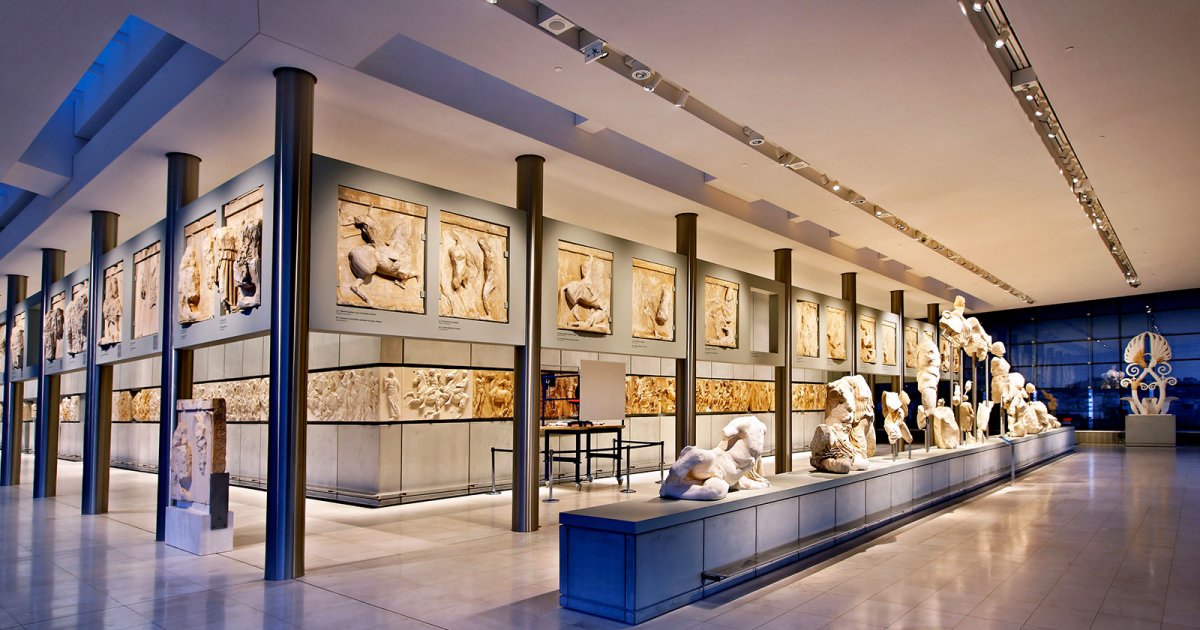ACROPOLIS MUSEUM, Second Floor Metopes Of The Parthenon
 Language: English / USA
Language: English / USA
Around the central structure, corresponding to the naos of the Parthenon, runs another structure supported by columns where you can admire the metopes, the stone plaques sculpted in relief that originally adorned the horizontal structure above the columns of the temple and under the roof. These too are visible at a much closer range than they would have been in the temple.
The metopes, which decorated the horizontal structures of the Parthenon, were the first to be sculpted. There were originally 92 of them, illustrating mythological battles in which Greek heroes defeated their enemies, almost always represented as monstrous beings.
There are depictions, for example, of the young Athenians against the Amazons, the mythical warrior women; the youths of Thessaloniki fighting the Centaurs, mythical creatures that were half-man and half-horse; the Gods defeating the Giants who had attempted to scale Mount Olympus, their dwelling place and a symbol of order in the world; and lastly, the Sack of Troy, attacked because Paris had eloped with Helen, the wife of Menelaus, king of Sparta, as we can read in the Iliad.
When the Parthenon was built, Athens had just emerged victorious from the bloody war against the Persians, so these stories depict the battle between good and evil, with the Greeks of course representing good and their enemies – the Persians - evil.
In this room, you’ll also see a number of large, very fragmentary sculptures. This is all that remains in Athens of the statues on the two pediments, the triangular spaces formed by the horizontal frames of the roof of the Parthenon. The scene included complete, colossal statues, sculpted on themes from Attic mythology: one showed the birth of the goddess Athena, from the head of her father Zeus, before the gods of Mount Olympus, while the other showed the battle between Athena and Poseidon for Athens.
An interesting fact: the sculptures are badly damaged because when the Venetians attacked the Parthenon, which had been turned into a gunpowder magazine by the Turks; this caused the collapse of the roof and part of the naos, 14 columns and many of the metopes. The Venetians also tried to remove the large sculptures of the pediments to take them back to Venice. The operation came to a disastrous end, because the marvelous sculptures ended up in pieces, and what remained of them was burned to make lime.
Our visit to the Acropolis Museum ends here. MyWoWo would like to thank you - see you again at another Wonder of the World!



